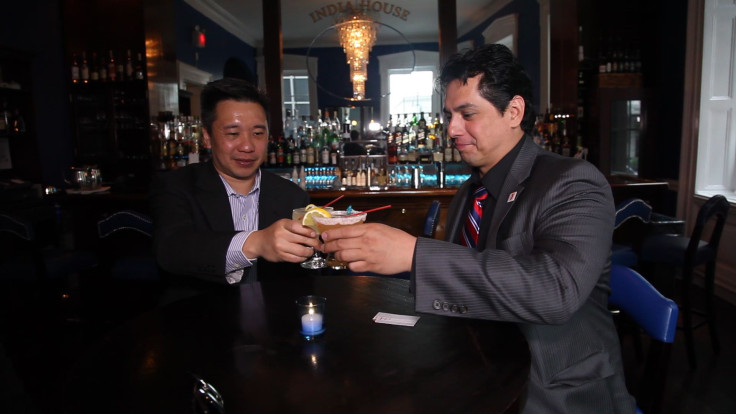Drought, Drug Cartels, Rising Prices Combine To Create Cinco De Mayo ‘Limepocalypse’

An unprecedented shortage of limes, and the resulting spike in prices, has put the squeeze on bar owners and restaurateurs, who have had to come up with creative solutions to keep costs down. The shortage could lead to higher bar tabs for revelers as Cinco de Mayo approaches.
The staple drink of the boozy holiday is the margarita, a strong tequila-based concoction that is often made with the juice of an entire lime. But lime prices are much higher than usual this spring, going for almost $200 per 40-pound case in New York as opposed to $30 to $40 per case in recent years, thanks to drought and crop disease. The situation has forced some drinking and dining establishments to get creative in order to remain competitive and retain customers.
Mimi Burnham, bar manager of the Blue Bar at New York City’s upscale India House, said she has had to take drastic measures, such as offering a “de-limed” daiquiri containing no trace of the green fruit, and a take on the margarita that replaces two-thirds of the usual 1.5 ounces of fresh lime juice with grapefruit and lemon juice. Burnham said she’s not the only one, but she hasn’t gone as far as the bartenders who've removed limes, which she calls “precious as gold,” from drinks and garnish trays altogether -- or even switched to sugary lime concentrates, which she vows to never do.
“‘Limepocalypse’ is a real thing. It’s affecting everyone,” she said. “All of us in the business … are making our spring cocktail menus and we’re looking at lime prices, and it’s gone from $30 to $180 a case in the past month and a half.”
The price of mojitos, margaritas and other drinks that contain lime juice will likely be higher than usual, said Mark Allison, senior vice president for culinary and kitchen operations at Chanticleer Holdings, the Charlotte, N.C.-based company that owns the international rights to popular chain restaurants including Hooters and American Roadside Burgers.
“I would imagine that prices will be more expensive than what they have in the past,” said Allison, though he added that many bars will avoid increases by using concentrate or switching to lemons. Because prices of alcoholic beverages are often already marked up significantly, some eateries and bars have been able to absorb much of the increased price of limes, particularly when many of their cocktails contain only small amounts of lime juice or use the fruit simply as a garnish.
The lime shortage is a major issue for people in food and beverage services and farming industries, and for some consumers it'll be an issue come Cinco de Mayo, when they will be faced with unexpected choices about their favorite cocktails. Some airlines have already cut limes from their beverage service programs, and even bottles of Corona will look different as bars swap out glass-rim-perched lime slices for crescents of lemon.
The lime shortage has also forced some restaurants to alter menu items. Some Thai eateries across America have begun to squeeze lemons into their pad thai dishes, and Mexican restaurants are making similar changes to their normally lime-infused cuisine.
The dearth of limes this spring, as with so many other fruits and vegetables in the produce aisle, is rooted in global economics and climate variations. Most limes purchased and consumed in the U.S. in recent years are grown in Mexico, and the smattering that are grown domestically mostly come from California, in the wake of a drought a decade ago that killed many of Florida’s lime groves. What happens below the border doesn’t always stay there, and the lime trade is no exception.
A nasty drought that gripped the West Coast of the U.S., combined with heavy flooding across Mexico’s lime-growing regions, left lime yields extremely low this year, and disease devastated much of the remaining crop. Many of the limes that actually made it to harvest in Mexico became victims of a different scourge entirely: the country’s violent drug cartels, which are in conflict with growers as a result of squabbles over territory, protection money and other concerns. Criminals even reportedly robbed a truck carrying the scarce fruit.
The current shortage is expected to ease within a few months as a new crop goes to harvest. But for Cinco de Mayo and the start of summer, drinkers with a hankering for a taste of Mexico may be better off ordering rum-infused horchata.
© Copyright IBTimes 2024. All rights reserved.











